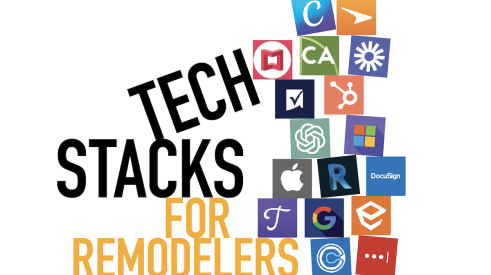As one of the last steps to prepare for our impending relocation, I needed to post “Emergency No Parking” signs in front of our row house in downtown Washington, D.C. The permits reserve parking for the moving van for two weekdays between the hours of 7 a.m. and 5 p.m. That time period overlaps at both ends with rush hour on 16th St., which is a five-lane avenue with heavy commuter traffic.
The signs, which have to be posted at least 72 hours ahead of time, not only warn local residents that there will be fewer available parking spots during non-rush hours, they also alert commuters that there will soon be one hellacious bottleneck in their daily trek to and from work.
The police department provided seven stiff paper signs preprinted with dates and times of the parking restriction, so all I needed to do was fasten them to stakes that could then be driven into the grass tree box at the curb. Simple.
Except I had no stakes. What I did have was some 1x3 strapping and 20 years of experience as a carpenter, so the obvious solution was to make my own stakes.
Except I had packed all of my power tools into boxes that were now neatly stacked in the garage awaiting the movers.
All was not lost, however, because I could still retrieve two crosscut handsaws (remember those?) that were stored in a long, narrow toolbox that didn’t fit in any of our moving boxes.
Handsaw Reverie
As I started the first cut, I quickly discovered that both saws were badly in need of sharpening. Frustrated, I sawed furiously, preoccupied with the thought of all of the time and effort I could have saved myself had I been able to make the cuts with a power saw.
It didn’t take long, however, for me to remember that with a handsaw—as with negotiations, personnel management, golf, and many other things in life and business—brute force does not often yield the best results. Light pressure and a stroke that puts more of the saw’s teeth in play works far better.
So for the second cut, my mantra became, “Let the tool do the work.” The cutting was easier, but it was still hard on my arm, and that got me thinking about how carpenters used to cut lumber for entire houses by hand. To compete, both they and their saws needed to stay sharp.
By the third cut, I was thinking about how portable electric circular saws, which first appeared in the 1920s, must have revolutionized the jobsite. Like any new technology, I’m sure the saws were expensive and needed frequent adjustment, and the early adopters were probably ridiculed for throwing their money away on a so-called labor-saving device. Eventually, though, any company that wasn’t using portable power saws couldn’t stay competitive. I saw that pattern repeated with pneumatic nail guns, portable table saws, compound miter saws, and similar power-tool innovations.
Soon I was thinking about how early adopters of computers—who were faced with the same problems of high cost, unreliable performance, and ridicule from their peers—eventually gained a leg up in the marketplace because of the improved accuracy and efficiency of digital tools.
Tools Do the Work
By the time I’d finished making those seven cuts, I’d renewed my appreciation for the reliability of a handsaw—even a dull one. But I was also reminded of how even the most reliable tools, whether designed to cut wood or time or red tape, are vulnerable to innovative technologies. Digital cordless tools, social media platforms, and cloud-based software are examples of innovations already disrupting the remodeling business, and early adopters who have persevered in the face of the usual challenges are starting to reap the benefits.
I don’t know what’s coming next, but I’m pretty sure that those who use it first will win.
Related Stories
Pro's Picks: A Paperless Note-Taking Tablet
This remodeler recommends a tablet that makes note-taking and document organization easier
Remodeler Tech Stacks 4 Ways
See the approaches and philosophies other remodelers follow in their businesses for better efficiency, growth, and profit
3 Things Top-Performing Home Improvement Salespeople Do Differently
On this episode of Rock Stars of Remodeling, Rillavoice Co-Founder and CEO Sebastian Jimenez Bienen reveals the top three behaviors of successful home improvement salespeople and shares how to better leverage your time in sales
Pro's Pick: Quickpage Video Messaging App for Marketing and Sales
This Pro’s Pick helps contractors earn the trust of customers by delivering personalized video messages at key touchpoints
Pro's Picks: Software for Thorough, Transparent Estimating
This pro recommends a robust estimating software
Contractors Release App Made for the “Remote Quote”
RENDR is a new app built by contractors, for contractors
Pro's Pick: Track KPIs in Real-time with Data-Sharing Platform
This Pro’s Pick helps you run your home improvement business by the numbers
ChatGPT: The AI Technology Shaking Up the Remodeling Industry (And Making Us Question Our Existence)
From answering customer inquiries to generating content, ChatGPT is transforming the remodeling industry. But is it just a helpful tool or a sign of our impending robot overlords? We investigate.












